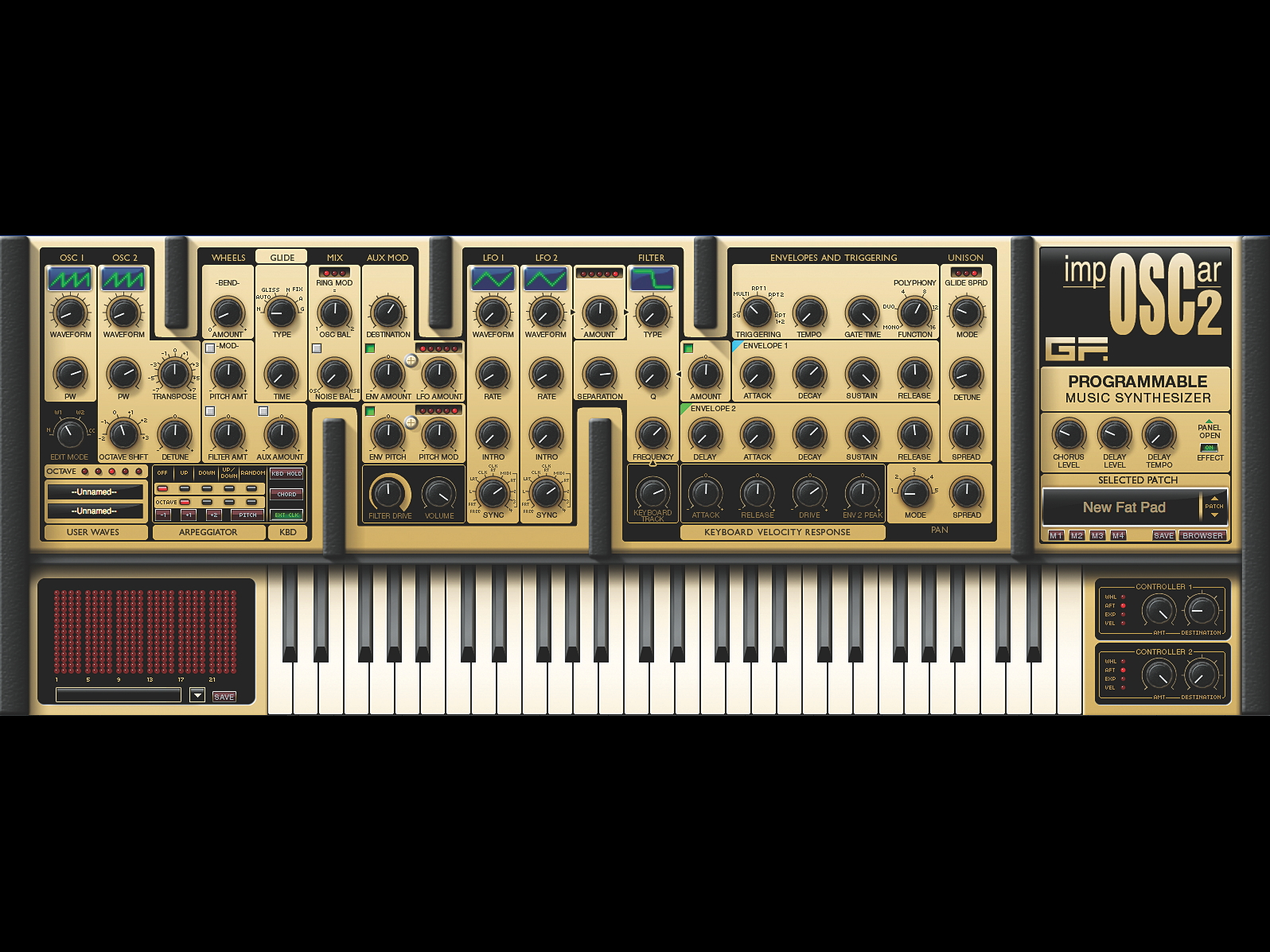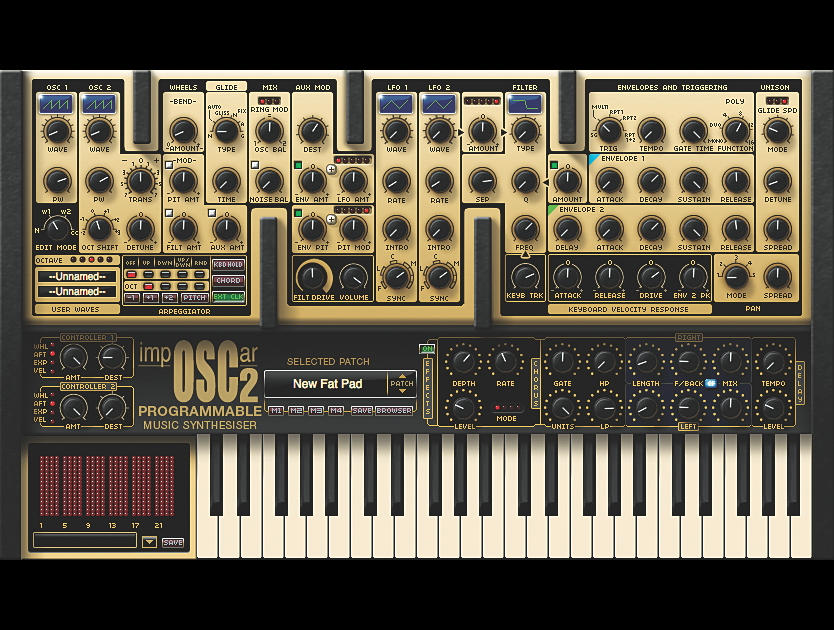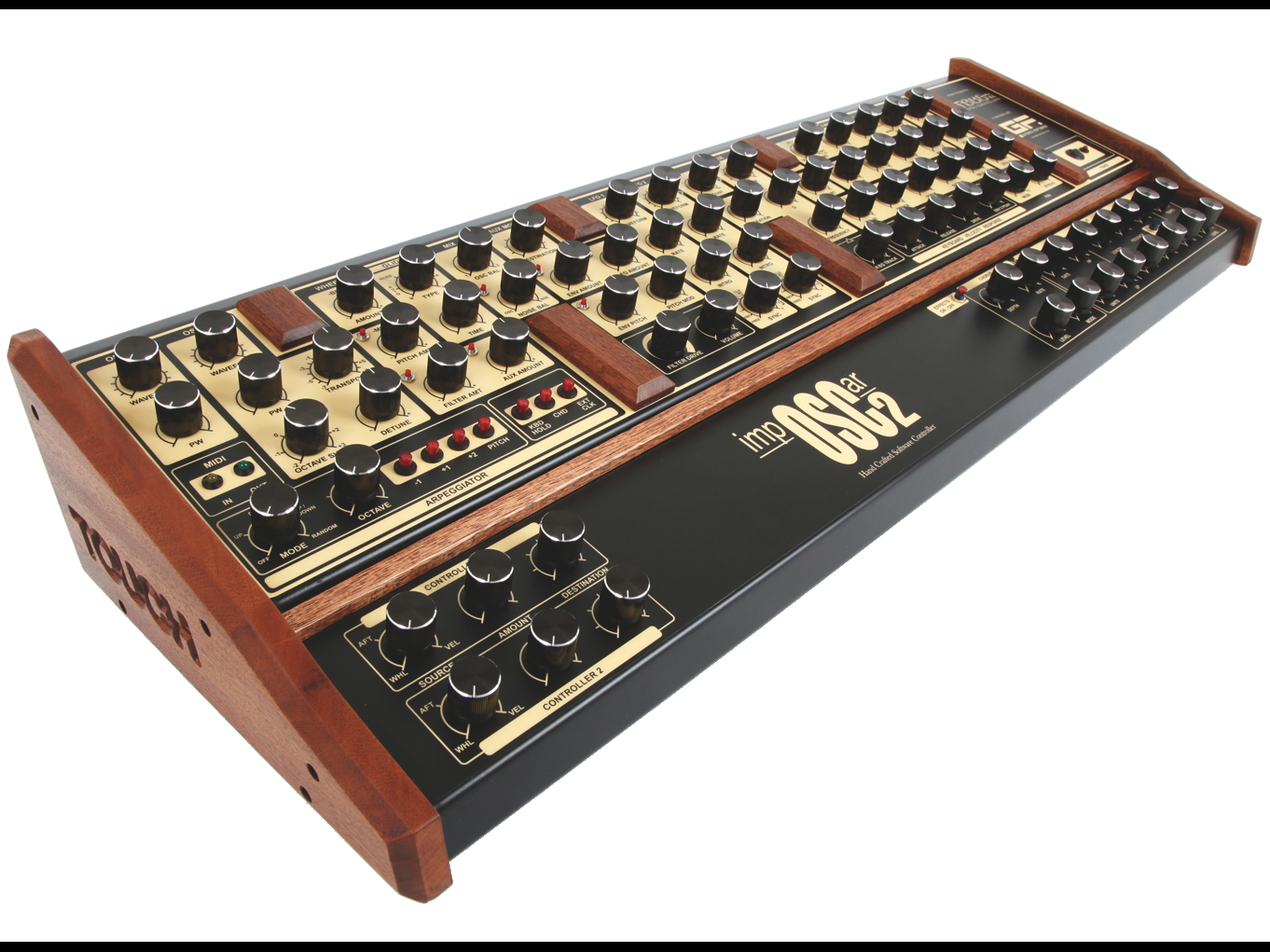MusicRadar Verdict
Don't be fooled by the name, for impOSCar goes far beyond mere mimicry to deliver GForce's own synthetic vision
Pros
- +
Stunning sonic development. Massive unison mode. Effects version expands possibilities. Huge patch library with new browser. New Aux Mod section. Luxury controller available separately.
Cons
- -
No reverb effect. Interface can be intimidating.
MusicRadar's got your back

GForce impOSCar 2

GForce impOSCar 2

Touch Digital Controllers impOSCar 2 MIDI controller
The OSCar hardware synth was launched by the Oxford Synthesiser Company in the early 80s. It's since become a classic and is a shining example of British technological innovation.
Used by FSOL, Underworld, Orbital and many other noteworthy dance acts, it featured two digital oscillators with monophonic or duophonic voicing. Upping the ante, the designers showed off a polyphonic successor at a trade show in the mid '80s, but alas, it never made it into production.
"16-note polyphony can result in some monster chords. The results are wide, deep and fat."
Picking up the baton in 2003, GForce Software released a software OSCar emulation, impOSCar. It was true to the original, but with the addition of polyphony and an effects section.
Key OSCar features were present and correct, including those distinctive digital oscillators (complete with user-programmable additive waveforms), dual filters with a novel separation control, and screaming overdrive.
Of course, it makes no particular sense to forever adhere to the restrictions of a time defined by physical limitations when so much more sonic trickery can be had in the virtual realm. To this end, GForce has combined feedback from impOSCar users with its own expert ideas to come up with a logical evolution, impOSCar 2.
It's currently Mac-only, in VST, AU and RTAS formats, but a PC version is coming soon. Some might argue that this furthering of an established classic represents irreverence and arrogance on a par with making Hendrix's next record. We beg to differ.
Unison, and on, and on...
The first thing you need to do to be convinced of this is listen to the unison mode patches, which cover bass, lead, pads and more.
This new unison mode stacks up to eight voices per note and spreads, staggers, detunes and pans them to create a huge sound.
You get up to 16-note polyphony, too, which can result in some monster chords. The results are wide, deep and fat, and not only that, but you can have differing glide times for each of the stacked unison voices, which helps in creating amazing textures for leads and pads.
Other sonic additions are a ring modulator - which has its moments - and independent pulse width control of the two oscillators. A second LFO has been added along with an Aux Mod section, enabling you to route either of the two modulators to a host of targets. LFO syncing has also been modified to allow slower modulations. Other sonic niceties for v2 are pink noise generation and new chorus modes.
It all adds up to a much more refined instrument, and that's reflected in the patch library, which shows a considerably fuller all-round complement of sounds.
It's still a synth and proud of it, so you don't get orthodox string/brass/piano-type patches. There is a folder of organ sounds, but this is perhaps the least impressive area.
What you do get is a wide range of synth sounds that are testament to the extended versatility of this new incarnation. In the past, you wouldn't have turned to impOSCar for a characterful pad sound, for example, but now you certainly would. And the same applies to wide bass sounds and textured leads.
There are now so many patches that the new Patch Browser is arguably a necessity. It gives direct access to banks and patches and you can map favourite sounds to Program Change numbers - great for live work.
Enhanced performance
It's not just the sonic aspect that's impressive. To enhance the expressive performance powers of the instrument, it's been given polyphonic aftertouch to go with new velocity response controls.
Elsewhere, a Chord Memory feature captures a played chord that you can then play on one note transposed across the keyboard - this is always a fun, inspirational feature, and it's great for the musically challenged, too.
Likewise, the Arpeggiator affords hours of instant gratification, and there are some very useable arpeggiator patches to be found.
ImpOSCar 2 now comes in an effects version as well that can be used like any other effects plug-in. You can apply its superb filter, envelope and modulation mayhem to whatever you like - no signal is safe!
If you fire up the demo and discover that you can't read the GUI's tiny text, don't panic. The synth opens in the default 'small' interface, which is pretty hard to read but saves screen space.
Luckily, there are two scaled-up versions to be had, the largest of which is quite alluring.
Bunch of knobs
If you're really serious about impOSCar 2, you'll be thrilled to hear that there's a company that makes a bespoke hardware controller for it. It's a standard MIDI device, so it'll work with any other software too. We had one to try during our review period and can say that it had us truly immersed in the sounds from the moment we plugged it in.
The impOSCar 2 MIDI controller is made by Touch Digital Controllers, and at £900, it ain't cheap. You do get your money's worth, though: this is the most solid and sturdy piece of equipment we've come across in a long, long time.
It's built like they used to build 'em and would no doubt survive a world war, never mind a world tour. The housing is all metal and wood and the knobs feel like the Minimoog's, with no lateral give in them whatsoever.
There are downsides, although this being the very first model, there will no doubt be some ongoing modifications.
The most frustrating thing is the lack of notched knobs, so you don't know, for example, which Sync mode you've selected from the 11 options without referring to the screen.
The lack of any Patch recall is annoying too. Program Change will probably be available on your controller keyboard, but it would be great to be able to scroll through patches without using the mouse.
The benefits far outweigh these issues, though, and if you're a hardcore impOSCar2 user with cash to burn, we're confident that you'd be bowled over by this unit. It makes you realise how much your creativity can be limited by a mouse or, to a lesser extent, a generic MIDI controller.
New features impress
But back to the software. So, would you? We definitely would.
For us, the big new features have to be the unison mode, which completely changes the complexion of the instrument, and the effects version, which enables you to imprint the filters, envelopes, etc, onto any audio you like.
All the improvements and enhancements have been well considered, and GForce has clearly paid heed to its loyal users' requests. ImpOSCar 2 has been a long time coming, but the wait has been so, so worth it.
Now listen to our impOSCar 2 audio demo:
Computer Music magazine is the world’s best selling publication dedicated solely to making great music with your Mac or PC computer. Each issue it brings its lucky readers the best in cutting-edge tutorials, need-to-know, expert software reviews and even all the tools you actually need to make great music today, courtesy of our legendary CM Plugin Suite.
“I said, ‘Are we sure we can write a song about death?’”: The story of Mike + The Mechanics' classic No.1 The Living Years
“Without investment in music education our talent pipeline is at risk of drying up along with the huge opportunities for economic growth it brings”: UK Music draws up five point plan to “turbocharge” music education
“How daring to have a long intro before he’s even singing. It’s like psychedelic Mozart”: With The Rose Of Laura Nyro, Elton John and Brandi Carlile are paying tribute to both a 'forgotten' songwriter and the lost art of the long song intro










